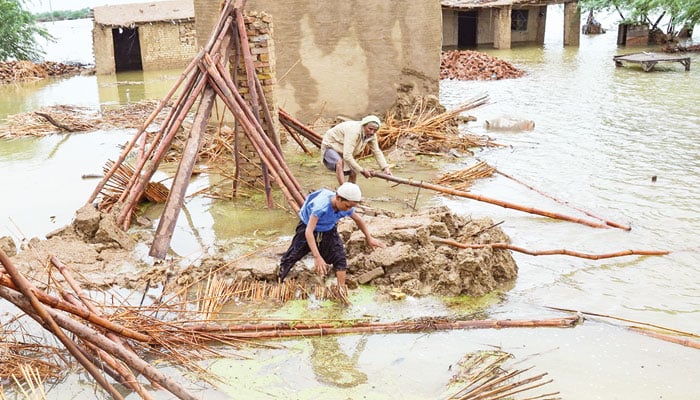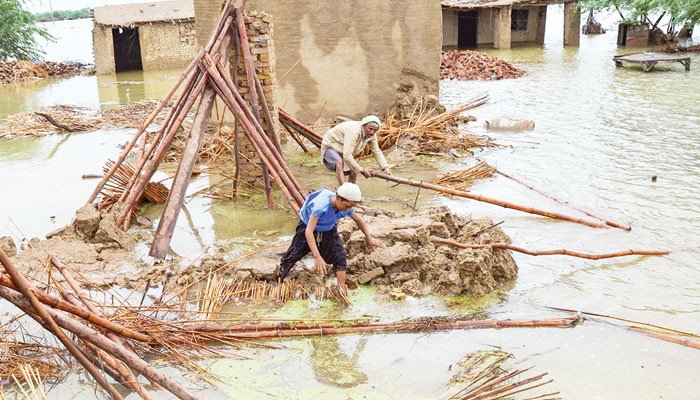
The effects of climate change (global warming) have been gradually affecting the entire world for the past decade. Hurricanes, droughts, heat waves, heavy rains and floods are wreaking havoc in every region. For the past several decades, scientists in developed countries were constantly predicting the occurrence of such tragedies. That is why these countries adapted their strategy to deal with this situation compared to the third world. But in a backward country like Pakistan, this subject was never taken seriously.
As soon as the monsoon starts, the flood season also comes in our country and these floods always bring destruction and destruction, every year there is a huge loss of life and money to the country and the nation. Since 1973, our country has been continuously affected by floods, we are continuously affected by devastating floods, but unfortunately flood prevention and safety measures are still not among our priorities.
No policy or plan came out from our side to deal with floods and store the flood water in new reservoirs, nor any concrete measures were ever taken on a regular basis, nor expert engineers, scientists. And the experiences of architects were utilized. While we can control the floods with the help of experts, it is only a matter of priorities, since 1973, flood control has never been among our priorities, but now we must keep in mind that the experts are constantly It is predicted that the rainfall in Pakistan and the region will increase every year and this will definitely bring more dangerous and destructive floods than the previous floods.
There are rains and floods in many countries of the world, but there is no disaster like in our country. Our biggest wish for the country and the nation at this time is that this country and the nation should be protected from floods in the future. If we get the ability to conserve the reservoirs, then the flood water can be utilized in the future. In particular, it should be used for the elimination of energy crisis, increase in electricity production and other agricultural and commercial purposes.
The serious consequences of climate change can be clearly seen in poor and underdeveloped countries like Pakistan, the modern machinery and resources needed to deal with these disasters are not available in the big cities of Pakistan. We have to develop friendly relations with our neighboring countries, because these natural disasters will cause more disasters every year, so now is the time to adopt an effective strategy on an emergency basis, because we are on the verge of destruction and destruction. are standing What steps can be taken to reduce the risk of flooding? How can flood risk management strategies be implemented?
• The main focus of the strategy is to “keep people out of water” by building only outside flood prone areas. *Flood prevention measures aim to reduce the likelihood of areas flooding through infrastructure works, such as dams and weirs, often referred to as “flood defences” or “structural measures”.* Flood risk mitigation focuses on reducing the consequences of flooding through measures within the vulnerable area. The consequences can be mitigated through smart design of the flood prone area. Measures include spatial planning, water retention within protected areas and flood-proof buildings.
Thus, all measures to avoid the risk of flooding include measures to retain or store water in or under a flood-prone area. Is. Actions include developing flood warning systems, disaster management and evacuation plans and managing when floods occur. Flood Recovery This strategy facilitates good and rapid recovery after a flood.
The major cause of death in Pakistan is that due to the drying up of rivers, people have built houses in and around the river and our management agencies have not taken any action, which has increased the number of deaths and losses. * In order to reduce the damages caused by floods, it is necessary to construct dams along with the cleaning of rivers, drains, canals and construction of new canals to divert the flood to areas where the chances of damages are reduced. are
